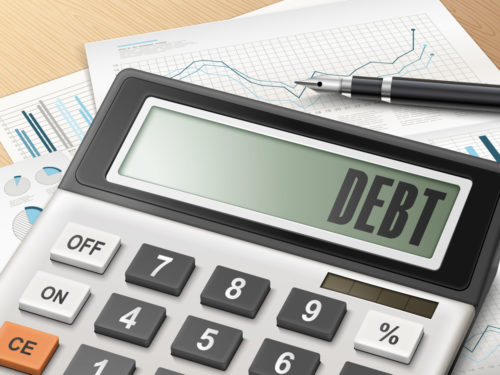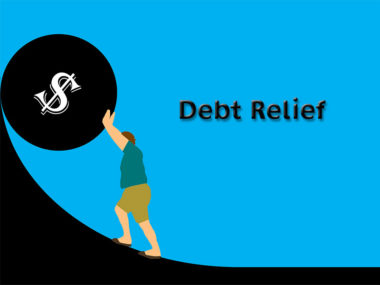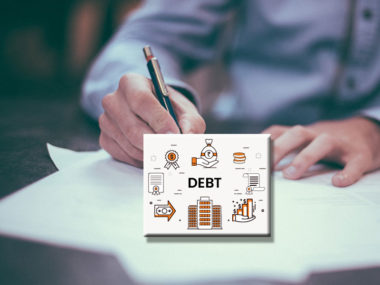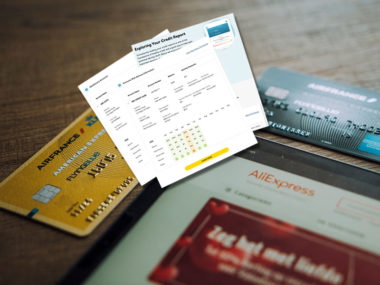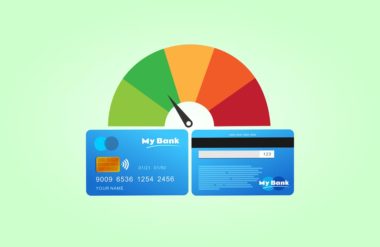A 2018 report by the Federal Reserve Bank of New York concluded that 44.7 million Americans have student loan debt totaling $1.47 trillion. At the same time, Americans have racked up nearly $1 trillion in revolving credit card debt. In addition to student loan and credit card debt, Americans also have mortgage, auto, medical, and business debt. Debt is growing and becoming increasingly common among consumers. If it’s managed thoughtfully and controlled precisely, however, debt isn’t necessarily bad.
Table of Contents
What Is Debt?
Debt is anything that one party owes to another party. The borrowing party is usually referred to as the “borrower” while the lending party is referred to as the “lender” or “creditor.” Simply put, to have debt is to defer payments of money owed.
As a consumer or business owner, when you buy something you can’t afford, a lender may pay for this big-ticket item for you. Then, you’re responsible for paying the lender back while adhering to the terms of the loan you agreed upon. In most cases, this includes the additional interest you must pay on the loan amount. You’re in debt to your lender until your balance on the loan reaches zero.
How Debt Works
The most common form of debt is a loan, which you may be familiar with if you’ve ever bought a car and financed it or bought a house and took out a mortgage to pay for it. As a borrower, you can ask a lender for a loan on a big purchase and you’ll be provided with an agreement that includes specific loan terms, including the:
- Loan amount: The amount of money you’re borrowing.
- Length of the loan: How long you’ll have to pay off the loan, also called the “loan term.”
- Interest rate: A percentage of the loan amount you have to pay in addition to the balance, used to compensate the borrower.
If you agree to the loan terms provided in the contract, the lender pays for the item you want to purchase. Then, you’re responsible for making monthly payments to the lender while adhering to the loan terms you agreed upon until the loan is paid off. In most cases, you’ll make this monthly payment to the lender for several years until your balance is zero.
How to Manage Debt
Too much debt can be crushing and overwhelming. If you’re dealing with multiple lenders or high loan amounts, it can feel like you’ll never pay off your debt. However, there are many strategies for managing debt. By adopting one of these strategies, you can begin to move toward becoming debt-free, no matter your situation.
If you employ the snowball method to reduce your debt, you’ll pay off your debt from the smallest to the largest amounts. This allows you to feel accomplished by knocking out smaller debts completely first, then moving on to the larger loan amounts. You can also choose to use the avalanche method to pay off your debt, which requires you to make minimum payments on all debts, then use any leftover money to pay down the loan that incurs the most interest. This ensures you’re not accruing too much interest and can get rid of loans with unsatisfactory terms quickly.
Another strategy for managing your debt is through balance transfers, which is a type of debt consolidation. If possible, you can transfer all debt to one balance so you’re making one payment each month to reduce your debt. Finally, you could look into debt settlements if your debt feels overwhelming. When you attempt a debt settlement, you negotiate with your lender for different loan terms that make it easier for you to tackle the loan, such as a lower interest rate or smaller loan amount.
Types of Debt
There are two main types of debt: unsecured or secured. When you have secured debt, you provide collateral for the loan, such as a car or a house. The lender takes ownership of this asset if you default on the terms of the loan agreement.
With unsecured debt, you don’t have an asset to back the loan. In this case, the lender can report you to a collections agency and you can face penalties if you don’t pay back the loan amount. There many different types of unsecured and secured debt.
Credit Card Debt
When you use a credit card to make a purchase, you’re not required to actually pay for the item at that time. The purchase price is added to your credit card balance, which is considered unsecured debt since there is no collateral. If you only make the minimum payment each month, your debt accumulates because the credit card company charges you interest on the balance you carry. If you miss a payment or make a late payment, you can also face a late payment penalty, which will increase your debt even more.
Medical Bill Debt
Unpaid medical bills can also be sent to debt collectors if you don’t pay them. Medical bill debt is common because hospital and doctor visits are expensive, especially without insurance. These visits can also be unexpected and hard to financially plan for. In some cases, you may be able to negotiate with the creditor or collections agency so you can be placed on a payment plan that’s more realistic for your budget.
Student Loan Debt
Student loan debt is the debt you accumulate through loans as a student, either from a private lender or the federal government. Most students must take out loans because the cost of college tuition is rising at an extraordinary rate. According to a 2018 Education at a Glance report, the U.S. spends more on education than almost any other country. When you leave college with crippling student loan debt, it can be hard to pay this debt off as you attempt to get started in life with a new job, house, and other independent living expenses.
Personal Loan
A personal loan is a form of unsecured debt that can be used for any purpose. If you’re attempting to consolidate debt, you may take out a personal loan to pay off these debts so you only owe one loan balance. It’s important to only agree to personal loans that offer favorable terms. You can use the assistance of a nonprofit credit counseling agency if you want to take out a personal loan but need to be sure it’s the right choice for you.
Car Loan
You take out an auto loan to help pay for a car. You can obtain this secured loan for a vehicle purchase through a private lender, financial institution, or through the dealership. The interest rate, down payment, and loan term are important factors you should consider before agreeing to a car loan.
Mortgage
A mortgage is a secured loan you take out to purchase a home. When you obtain a mortgage, you’re usually responsible for providing a down payment for the home and making monthly mortgage payments that include interest. The loan terms the lender provides you with are usually decided based on your credit score, income, and financial history. Getting a mortgage may be the biggest personal financial decision most consumers make (besides taking out student loans), so it’s important to shop around for a mortgage you know you can pay off comfortably.
Business Debt
If you’re just starting a business and you need a lump sum of money to get it up and running, you may be able to obtain a business loan. While you can go to a financial institution for a business loan, the U.S. Small Business Administration also provides business loans.
Payday Loan
A payday loan is a short-term unsecured loan that can help you if you’re living paycheck to paycheck. These loans generally don’t have desirable terms or interest rates, so it’s important to only use this type of loan in an emergency situation. If you depend on payday loans frequently, you’ll increase your debt substantially and it can be hard to manage or get out of debt at all.
The Point of Debt
Debt can be considered a problem for many, but it’s also an important part of our lives as consumers. Without loans, most consumers would find it impossible to make big purchases like cars or houses. Some entrepreneurs wouldn’t be able to start their own businesses.
While going into debt can be seen as negative, it also allows us to extend our purchasing power beyond our usual means. We make a bet on ourselves that we can eventually pay off purchases that are beyond our means over time. In many cases, debt is unavoidable. Making smart decisions about the type of debt you accrue can ensure you stay on top of it and maintain financial stability.
Image Source: https://depositphotos.com/
